第11章
Now let consciousness only be what it seems to itself, and it will help an instable brain to compass its proper ends.The movements of the brain per se yield the means of attaining these ends mechanically, but only out of a lot of other ends, if so they may be called, which are not the proper ones of the animal, but often quite opposed.The brain is an instrument of possibilities, but of no certainties.But the consciousness, with its own ends present to it, and knowing also well which possibilities lead thereto and which away, will, if endowed with causal efficacy, reinforce the favorable possibilities and repress the unfavorable or indifferent ones.The nerve-currents, coursing through the cells and fibres, must in this case be supposed strengthened by the fact of their awaking one consciousness and dampening by awakening another.How such reaction of the consciousness upon the currents may occur must remain at present unsolved: it is enough for my purpose to have shown that it may not uselessly exist, and that the matter is less simple than the brain-automatists hold.
All the facts of the natural history of consciousness lend color to this view.Consciousness, for example, is only intense when nerve-processes are hesitant.In rapid, automatic, habitual action it sinks to a minimum.
Nothing could be more fitting than this, if consciousness have the teleological function we suppose; nothing more meaningless, if not.Habitual actions are certain, and being in no danger of going astray from their end, need no extraneous help.In hesitant action, there seem many alternative possibilities of final nervous discharge.The feeling awakened by the nascent excitement of each alternative nerve-tract seems by its attractive or repulsive quality to determine whether the excitement shall abort or shall become complete.
Where indecision is great, as before a dangerous leap, consciousness is agonizingly intense.Feeling, from this point of view, may be likened to a cross-section of the chain of nervous discharge, ascertaining the links already laid down, and groping among the fresh ends presented to it for the one which seems best to fit the case.
The phenomena of 'vicarious function' which we studied in Chapter II
seems to form another bit of circumstantial evidence.A machine in working order acts fatally in one way.Our consciousness calls this the right way.
Take out a valve, throw a wheel out of gear or bend a pivot, and it becomes a different machine, acting just as fatally in another way which we call the wrong way.But the machine itself knows nothing of wrong or right:
matter has no ideals to pursue.A locomotive will carry its train
through an open drawbridge as cheerfully as to any other destination.
A brain with part of it scooped out is virtually a new machine, and during the first days after the operation functions in a thoroughly abnormal manner.As a matter of fact, however its performances become from day to day more normal, until at last a practised eye may be needed to suspect anything wrong.Some of the restoration is undoubtedly due to 'inhibitions'
passing away.But if the consciousness which goes with the rest of the brain, be there not only in order to take cognizance of each functional error, but also to exert an efficient pressure to check it if it be a sin of commission, and to lend a strengthening hand if it be a weakness or sin of omission, - nothing seems more natural than that the remaining parts, assisted in this way, should by virtue of the principle of habit grow back to the old teleological modes of exercise for which they were at first incapacitated.Nothing, on the contrary, seems at first sight more unnatural than that they should vicariously take up the duties of a part now lost without those duties as such exerting any persuasive or coercive force.At the end of Chapter XXVI I shall return to this again.